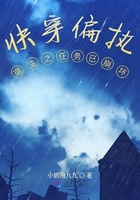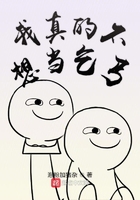I returned to Berlin with the determination to start my long?dreamed?of school—no longer to delay it, but to start at once。I confided these plans to my mother and sister, Elizabeth, who were equally enthusiastic。We immediately set out to find a house for the future school with such speediness as marked everything else we did。Within a week we found a villa, on Trauden Strasse in Grünewald, which was just passing from the workmen’s hands, and we bought it。
We acted exactly as though we were people in Grimm's Fairy Tales。 We went down to Wertheimer's and actually bought forty little beds, each covered with white muslin curtains, drawn back with blue ribbons。We set about to make of our villa a real children's Paradise。In the central hall we placed a copy of the heroic figure of the Amazon twice the size of life。In the large dancing?room, the bas?reliefs of Luca della Robbia and the dancing children of Donatello。In the bedroom, the blue and white babies and the Madonna and Child, also in blue and white, encrusted with garlands of fruit—the work of Luca della Robbia。
I placed these diferent ideal representations of the child form in the school, the bas?reliefs and sculptures of dancing children in their youngest years, in books and paintings too, because they showed the child form as it was dreamed of by the painters and sculptors of all ages;paintings of childrendancing on Greek vases, tiny figures from Tanagra and Boeotia, the group of Donatello’s dancing children because it is a radiant child melody, and the dancing children of Gainsborough。
All these figures have a certain fraternity in the na?ve grace of their form and their movements, as if the children of all ages met each other and joined their hands across the centuries, and the real children of my school, moving and dancing in the midst of these forms, would surely grow to resemble them, to reflect unconsciously, in their movements and their faces, a little of the joy and the same childlike grace。It would be the first step toward their becoming beautiful, the first step toward the new art of the dance。
I also placed in my school the figures of young girls dancing, running, jumping—those young girls of Sparta who, in the gymnasiums, were trained in severe exercises so that they might become the mothers of heroic warriors;those fleet?footed runners who took the annual prizes, exquisite images in terra cotta, with flying veils and fowing garments;young girls dancing hand?in?hand, at the Panathens。They represented the future ideal to attain, and the pupils of my school, learning to feel an intimate love for these forms, would grow each day to resemble them, and would become each day a little more inbued with the secret of this harmony, for I enthusiastically believed that it was only upon awakening the will for beauty that one could obtain beauty。
Also, in order to attain to that harmony I desired, they must each day go through certain exercises chosen with the aim in view。 But these exercises were conceived in a way to coincide with their own intimate will, so that they acccomplished them with good humour and eagerness。Each one was not only to be a means toward an end, but an end in itself, and that end was to render each day of life complete and happy。
Gymnastics must be the basis of all physical education;it is necessary to give the body plenty of air and light;it is essential to direct its development methodically。 It is necessary to draw out all the vital forces of the body towards its fullest development。That is the duty of the professor of gymnastics。After that comes the dance。Into the body, harmoniously developed and carried to its highest degree of energy, enters the spirit of the dance。For the gymnast, the movement and the culture of the body are an end in themselves, but for the dance they are only the means。The body itself must then be forgotten;it is only an instrument harmonised, and well appropriated, and its movements do not express, as in gymnastics, only the movements of a body, but, through that body, they express also the sentiments and thoughts of the soul。
The nature of these daily exercises is to make of the body, in each state of its development, an instrument as perfect as possible, an instrument for the expression of that harmony which, evolving and changing through all things, is ready to fow into the being prepared for it。
The exercises commenced by a simple gymnastic preparation of the muscles, for their suppleness and their force;it is only after these gymnastic exercises that the frst steps of the dance come。 The frst steps are to learn a simple, rhythmic walk or march, moving slowly to simple rhythm;then to walk or march quickly to rhythms more complex;then to run, slowly at first, then jump slowly, at a certain moment in the rhythm。By such exercises one learns the notes of the scale of sounds, and thus my pupils learned the notes of the scale of movement。These notes, in consequence, are able to be agents in the most varied and most subtle harmonies of structure。These exercises, moreover, are only a part of their studies。The children were always clothed, too, in free and graceful draperies in their sports, in their playground, in their walks in the woods;jumping, running naturally, until they should have learned to express themselves by movement as easily as others express themselves through speech or through song。
Their studies and their observations were not to be limited to the forms in art, but were, above all, to spring from the movements in Nature。 The movements of the clouds in the wind, the swaying trees, the flight of a bird, and the leaves which turn, all were to have a special significance for them。They were to learn to observe the quality peculiar to each movement。They were to feel in their souls a secret attachment, unknowable to others, to initiate them into Nature's secrets;for all the parts of theirsupple bodies, trained as they would be, would respond to the melody of Nature and sing with her。
To gather children for our school, we announced in the leading newspapers that the Isadora Duncan School was open for the adoption of talented children, with the purpose that they become disciples of that Art which I hoped to give to thousands of the children of the people。 Certainly the sudden opening of this school, without the proper premeditation or capital or organisation, was the most rash undertaking imaginable;one that drove my manager to distraction。He was continually planning world tours for me, and I was continually insisting upon, first, spending a year in Greece, which he called wasted time, and now, stopping my career altogether for the adoption and training of what he considered absolutely useless children。But this was quite in keeping with all our other undertakings, most unpractical and untimely and impulsive。
From Kopanos, Raymond sent us news more and more alarming。 The well became increasingly expensive。Each week the possiblity of finding water became fainter and fainter。The expenses of Agamemnon's Palace itself grew to such terrifying proportions that, in the end, I was obliged to desist。Kopanos has always remained a beautiful ruin on the hill, since used by each faction of Greek revolutionaries as a fortress。It is still standing there, perhaps as a hope for the future。
I decided that all my resources should be concentratedupon founding a school for the youth of the world, and I chose Germany as the centre of philosophy and culture, which I then believed it to be。
Flocks of children answered the announcement。 I remember, one day, returning from a matinee and finding the street blocked with parents and their offspring。The German coachman turned to me and said:“Eine verriickte dame die wohnt dort, die eine Ankundigung in die Zeitung gestellt hat dass sie Kinder sehr gern haben wilit。”
I was the verriickte dame。 I do not yet know exactly how we chose those children。I was so anxious to fill the Grünewald and the forty little beds that I took the children without discrimination, or merely on account of a sweet smile or pretty eyes;and I did not ask myself whether or not they were capable of becoming future dancers。
One day in Hamburg, for instance, a man in a high hat and frock coat entered my hotel drawing?room with a bundle in his arms, wrapped in a shawl。He placed this bundle on the table, and I opened it to find two great watchful eyes looking into mine—a child of about four, the most silent child I have ever seen。She did not utter a sound or say a word。The gentleman himself seemed to be very hurried。He asked me if I would take the child, and would hardly wait for a reponse。Looking from the baby face to his, I thought there was a significant resemblance which might account for his desire for secrecy and haste。With my usual lack of foresight, I consented to keep the child and he disappeared, nor did I ever see him again。
This was a mysterious way of leaving a child on my hands, as if she were a doll。 In the train from Hamburg to Berlin I discovered she had a high fever—a bad case of tonsilitis—and in Grünewald, for three weeks afterwards, we fought for her against death, with the aid of two nurses and the splendid doctor, Hoffa, the celebrated surgeon, who was so enthusiastic over the idea of my school that he gave his services for nothing。
Dr。 Hoffa frequently said to me,“This is not a school。This is a hospital。All these children have hereditary taints, and you will find that it will be necessary to take the greatest care to keep them alive, much less teach them to dance。”Dr。Hoffa was one of the greatest benefactors of humanity, a famous surgeon who was paid fabulous prices for his services, and then spent his entire fortune on a hospital for poor children, which he ran at his own expense, just outside Berlin。From the beginning of my school he constituted himself our doctor and surgeon in all matters concerning the health of the children and the sanitation of the school。In fact, without his untiring aid I could never have brought these children to the beautiful result of health and harmony which they afterwards attained。He was a great, robust, fine?looking man, with red cheeks, and possessed such a friendly smile that all the children loved him as much as I did。
The selection of the children, the organisation of the school, the commencing of the lessons, and the routine of their lives took all our time。 In spite of the warnings of mymanager that successful copies of my work in the dance were collecting fortunes in London and elsewhere, nothing would make me stir from Berlin。Every day, from five o'clock until seven, I taught these children to dance。
The children made phenomenal progress, and I believe their good health was due to the very sane vegetarian diet advised by Dr。 Hoffa。He was of the opinion that, at any rate for the education of the children, it is necessary to have a diet of fresh vegetables, plenty of fruit, but no meal。
At that time my popularity in Berlin was almost unbeliev?able。 They called me the G?ttliche Isadora。It was even bruited about that when sick people were brought into my theatre they became well。And every matinee one could see the strange sight of sick people being brought in on litters。I had never worn any other dress than the little white tunic, bare feet, and sandals。And my audience came to my performances with an absolutely religious ecstasy。
One night, as I was returning from a representation, the students took the horses out of my carriage and drew me through the famous Sieges Allee。 In the middle of the Allee they called for a speech。I stood up in the victoria—in those days there no automobiles—and I addressed the students thus:
“There is no greater art,”I said,“than the art of the sculptor。 But why do you, lovers of art, permit this horrible outrage in the middle of your city?Look at these statues!You are art students, but if you were really students of art you would take stones tonight and demolish them!Art?They, art?No!They are the visions of the Kaiser。”
The students were of my opinion and yelled their approbation, and if it had not been for the police who came along, we might have carried out my wish and destroyed those horrible statues in the city of Berlin。















